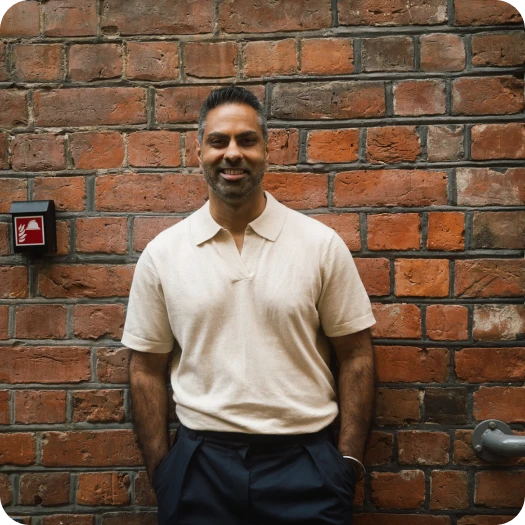How to Make a Million Dollars: advice + tips from real millionaires


If you’re aiming for your first million, skip the gimmicks and focus on what works: eliminate high-interest debt, build a solid safety net, invest early and often, and grow income through skills or a business. Real millionaires do this through consistent action, smart systems, and playing the long game.
Step 1: Get out of Debt First
Before you can build wealth, you need to stop losing money to high-interest debt that works against you.
Understand that debt is your biggest barrier to wealth
High-interest debt, particularly from credit cards, can significantly slow down your financial progress. With interest rates between 15 and 25%, credit card debt can quickly outpace potential investment returns, keeping you in a negative financial cycle. Becoming debt free provides the psychological clarity and confidence needed to make strategic financial decisions for wealth-building.
Create a debt elimination plan
Start by listing all your debts—including the corresponding interest rates and minimum payments—to get a clear picture of what you owe. Prioritize paying off high-interest debts first while maintaining minimum payments on lower-interest accounts. If possible, look into consolidation options to lower your rates and speed up repayment. Use my Debt Payoff Calculator to help you figure out just how long it’ll take you to pay off your debts.
Don’t forget to automate your debt payments to ensure consistency and prevent missed payments that could hurt your credit score and financial progress.
Step 2: Build Your Financial Foundation
Before you focus on growing wealth, you need a strong financial safety net to protect yourself from unexpected setbacks.
Create an emergency fund
A solid financial foundation is critical to have before diving into wealth-building. This starts with creating an emergency fund—a financial safety net that prevents unexpected expenses from forcing you back into debt. Successful millionaires like Shannon (see below) emphasize that saving creates the foundation and freedom needed to pursue entrepreneurial ventures without excessive risk.
A good starting point is saving at least $1,000 for immediate emergencies, then gradually building up to three to six months’ worth of essential expenses. Store these savings in a high-yield savings account where they remain accessible while still earning interest.
Decide how much you actually need to save
To determine how much you need, calculate your essential monthly expenses, including housing, utilities, food, transportation, and insurance. Include irregular but predictable expenses like car maintenance, medical costs, and home repairs in your calculations to create a truly comprehensive safety net.
If your income fluctuates or you have dependents, aim for the higher end of the savings range. Review and adjust your emergency fund target as your expenses evolve.
Step 3: Start Investing Consistently
Investing is the most powerful tool for turning thousands into millions. The earlier you start, the more time compound interest has to work in your favor.
401(k): Leveraging employer matching
If your employer offers a 401(k), take full advantage—especially if they match contributions. Employer matching is essentially free money that instantly doubles your investment up to the matching limit. Not taking advantage of this is like leaving part of your paycheck on the table.
A $5,000 annual contribution, paired with employer matching and smart investing, can grow to over $2.7 million by retirement. Contributions come from pre-tax income, which lowers your taxable income while allowing more money to grow. Since 401(k) contributions are automated through payroll deductions, they create a disciplined, hands-off investing habit.
If you’re not contributing enough to get your full employer match, increase your contributions as soon as possible. Once you’ve maxed out the match, consider additional investment options to build your wealth further.
Roth IRA: The tax-free growth advantage
A Roth IRA offers tax-free growth. In other words, once you contribute after-tax dollars, your money grows without being taxed, and withdrawals in retirement are also tax free. This makes Roth IRAs especially valuable for younger investors or those expecting to be in a higher tax bracket in the future.
While contribution limits are lower than 401(k)s, the tax-free withdrawals make Roth IRAs a powerful addition to your investment strategy. Decades of compounding returns without tax liability can turn modest savings into a significant retirement fund.
If you qualify, contributing to both a 401(k) and a Roth IRA provides flexibility in managing retirement income, balancing tax-deferred and tax-free growth.
How compound interest turns thousands into millions
Compound interest allows your money to grow exponentially by earning returns on both your ongoing contributions and past gains. The earlier you start, the more powerful this effect becomes.
For example, investing just $500 per month from age 25 to 60 could grow to over $1.1 million. This isn’t just from your contributions—it’s from your money continuously growing itself.
The biggest mistake investors make is trying to time the market. My advice is to focus on staying consistent instead. Time in the market beats timing the market every time. Even small, regular investments over decades can result in substantial wealth. Feel free to use my Investment Calculator to determine how much your investments will be worth in the future.
Step 4: Develop a Million-Dollar Business Idea
You don’t need to invent the next iPhone to build a million-dollar business. The best business ideas often come from recognizing skills you already have and offering them in a way that solves real problems for others. Instead of searching for a groundbreaking idea, start by looking at what you’re good at and what people are willing to pay for.
Find the right idea
A simple but effective exercise is to take 20 minutes and list at least five skills you have that others might find valuable. These could be anything from writing and graphic design to problem-solving or financial consulting. Once you have your list, consider how you can package those skills into a service or product that fills a specific need. Most successful businesses aren’t trying to serve everyone—they focus on solving a particular problem for a clearly defined audience.
Beyond just expertise, it’s important to choose something you actually enjoy. Business isn’t always easy, and passion will keep you going when challenges arise.
Find your first paying clients
Once you have a solid business idea, the next step is landing your first clients. One of the best ways to do this is by building an email list. By creating valuable content—whether it’s blog posts, social media insights, or free resources—you establish trust and attract potential clients who are already interested in what you offer. Emails allow you to engage with your audience directly, without relying on social media algorithms.
Another key strategy is to find where your ideal clients are already looking for solutions. This could mean engaging in relevant online communities, joining industry-specific forums, or even networking in local business groups. Creating a detailed profile of your ideal client—including their demographics, interests, and challenges—helps refine your marketing efforts and makes it easier to connect with the right people.
Freelance platforms like Upwork and Fiverr can also be great starting points to land initial clients and build your portfolio. While competition can be high, focusing on a specific niche allows you to stand out. Specializing in a particular area not only makes marketing more effective but also enables you to charge premium rates for your expertise.
Scale your income through systems
The key to increasing your income is scaling efficiently. This means setting up systems and processes that allow you to serve more clients without working longer hours. Whether it’s automating administrative tasks, developing standardized workflows, or outsourcing low-value work, having the right systems in place allows you to grow without burning out.
Continual learning is another critical factor. Investing in books, courses, and mentorship helps you improve your skills, which in turn allows you to charge higher rates. The more value you provide, the more your business can grow.
To truly scale, look for ways to generate passive income. This could mean creating digital products, launching an online course, or offering subscription-based services. Unlike one-on-one work, these revenue streams continue generating income even when you’re not actively working.
As your business expands, delegation becomes essential. Hiring help for administrative or technical tasks frees you up to focus on high-value activities like strategy, sales, and client relationships. By shifting from working in your business to working on it, you can drive sustainable long-term growth.
Real Millionaire Case Study: Erik K.

Erik K. started as a freelance UX/UI designer but saw a bigger opportunity in teaching others. He launched Learn UI Design, an online school to help aspiring designers improve their skills. His breakthrough came from sharing valuable content, particularly his article “7 Rules for Creating Gorgeous UI,” which quickly gained traction and positioned him as an authority in the field.
Rather than relying on social media alone, Erik focused on building an email list, growing it to over 30,000 engaged subscribers. This direct connection with his audience laid the foundation for launching his educational products. With consistent 60% year-over-year growth, his business soon surpassed the million-dollar mark—all by solving a clear problem for a dedicated audience.
We can take away a few key lessons from Erik’s journey:
- Share valuable content first: Instead of focusing on selling right away, Erik established credibility by freely sharing useful knowledge. If you want to attract an audience, start by providing value.
- Build direct relationships through email: Social media is great, but it’s unpredictable. Email marketing gives you control over your audience and allows you to nurture long-term relationships.
- Keep improving your skills and systems: Erik continually refined both his teaching and his business operations, increasing the value he provided while making his business more efficient.
- Experiment and learn as you go: Erik didn’t have everything figured out from day one. Instead, he tested different approaches, learned from his experiences, and adjusted along the way.
Real Millionaire Case Study: Shannon B.
